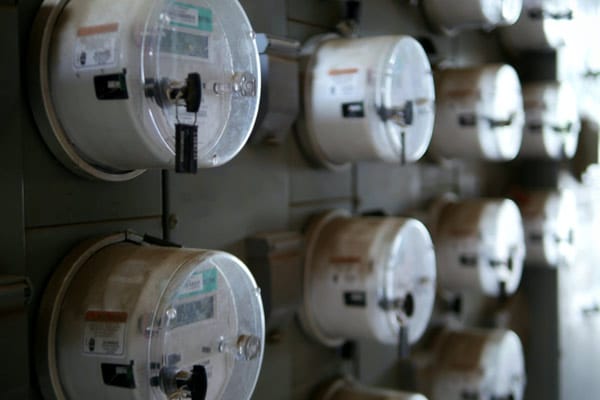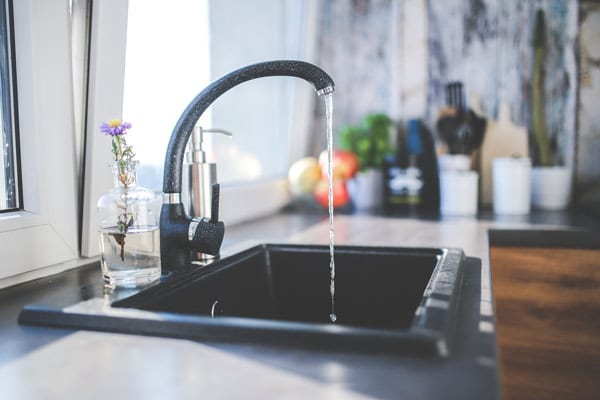Moving house is a period that’s full to the brim with various move-related tasks. In fact, your best bet to organize well the time you have before your move-out date is to follow a MOVING CHECKLIST – a detailed to-do list that’s been customized to your particular relocation case.
To make your moving checklist efficient, you’re going to have to prioritize the tasks inside it. Why? Some jobs are just more urgent than others and you want to make sure you’ve completed the most critical ones first in case you don’t have enough time to take care of them all.
While it’s preferable that you change your address with the USPS before the move, you can still do it after the move is complete and you find yourself in the new home. However, you should never leave the important task of changing your utilities for after the move… unless you somehow wish to move into a place without electricity and no running water either.
How are you supposed to start unpacking those boxes in the dark?
Follow these steps to learn how to change your utilities when moving house.
Step 1. Prepare a list of all your home utilities
Changing utilities when moving is a multi-step process that you should initiate roughly 2-3 weeks prior to Moving day. Bear in mind that switching utilities can take some time, especially during the summer period when the majority of people are moving around the country.
The very first thing you should do is make a detailed list of all the home utilities you’re using right now. The major services at your home should be:
- Electricity;
- Water;
- Gas;
- Cable TV;
- Internet;
- Landline phone;
- Waste removal;
- Home security, and more.
As you’re creating your own list of household utilities, write the name of the utility company against each service so that you know which one you should contact to arrange their timely disconnection.
Top 10 Tips for Moving Locally
Step 2. Reassess your current utilities
Take a good look at the utilities list you’ve just created and think about whether you really need all of those services. Apart from electricity and water, maybe there’s a utility you can go without with the purpose of saving money in the long run.
After all, it doesn’t make much sense to pay for a service you don’t use at all or use very rarely. The good news is that your upcoming house move is the ideal time to reevaluate the need to keep all the home utilities you’re enjoying at the moment.
Maybe you don’t watch TV often enough or maybe the landline phone is very rarely used since you have a cellphone with you at all times. Keep in mind that deciding to cancel a service can save you hard-earned money in the future.
And there’s no risk involved either – if you happen to miss a service you’ve canceled, you can always renew it at the new home.
Step 3. Contact your current utility providers
The next step when switching utilities when moving is to get in touch with your present utilities companies in order to arrange the timely disconnection of the services at the place you’re about to leave. As mentioned above, you should get in touch with the various utility providers approximately 3-2 weeks before you’re scheduled to move away.
When you’re about to perform a local move (within 50 miles) or an intrastate move (within the same state), then you may not need to change your current utility providers. In such a case, you’ll only need to transfer the utilities between the two addresses.
When you’re moving to another state (a cross-country move), then you’re likely to have to change the utility service providers, in which case you’ll be changing your home utilities instead of simply transferring them.
Remember to schedule the disconnection of your house utilities for the day after you move out of the current place.
What to Do Before Movers Arrive
Step 4. Pay up outstanding balances, if any
When you contact your utility providers to schedule the disconnection of the house utilities, check whether you have any outstanding bills. Chances are they will inform you if you do even if you choose not to ask them.
Of course, you’ll have to pay any unpaid bills with a utility provider before they can stop the service at your request. When your account balance is at zero, then a service you’re enjoying can be canceled or transferred depending on the situation.
The majority of utility providers require deposits from their new customers so if you paid your utility companies deposits when you first started using their services, then this is the right time to get your deposit back. Once you’ve paid up any outstanding balances, there is no reason why a service provider should refuse to give you back your deposit or any possible refunds.
Step 5. Get in touch with the utility companies at your destination
When you’ve arranged the disconnection of the services at the place you’re leaving, it’s time to look for good utility companies in the new town or city.
When you’re moving into a rental place, then your landlord will know the service providers in the area and should be able to recommend the best ones. The chances are that the major home utilities such as electricity and water will probably be up and running before you move in but you must check with your landlord in advance.
When you’re moving into an apartment, then the property manager or the building management will give you more information about the best utility providers there. When moving into a house, then the real estate agent will know that kind of information.
Either way, make sure you get in touch with the proper utility companies at the destination way before Moving day.
Step 6. Arrange the set-up of the new home utilities
The next step when changing your utilities during a move is to schedule the setup of the new house utilities with the utility companies in the new area.
The good news is that if you are given the option to choose between several utility providers, then you’re more likely to negotiate a better deal for yourself.
Here are a few questions you’re encouraged to ask the new service providers before you become a subscriber yourself:
- Will there be any charges for setting up the new house utilities? If yes, how much will they be?
- Will you have to pay a deposit as a new customer? If yes, how much will it cost? Also, what will be the terms for getting back that deposit if you have to move out sometime in the future?
- Are there any current discounts or deals you should know about as a new customer? It never hurts to ask.
Finally, request a date for getting those utilities turned on. Ideally, you’ll have the major home utilities up and running a few days before you move into the new apartment or house. In the best-case scenario, you will be present when the services are being switched on – regrettably, that’s often impossible, especially when you’re moving across the country. If so, speak with your landlord or real estate agent to find a good solution.
Step 7. Write down the readings of your utility meters
If possible, have a representative of your current utility providers visit your home shortly before you move away for official reading of the meters for electricity, water, and gas. Then, make sure you keep those readings reports in a safe place in case you need them as proof.
If you cannot arrange for an official reading of those meters before you have to move out, record their readings yourself and then take photos of them as double insurance. If possible, turn on the automatic date stamp function of your digital camera to prove the exact date on which you took those pictures.
It’s a good idea to get the landlord or the real estate agent to be present at that moment if you’re moving out of a rental place to avoid any possible disputes later on.










